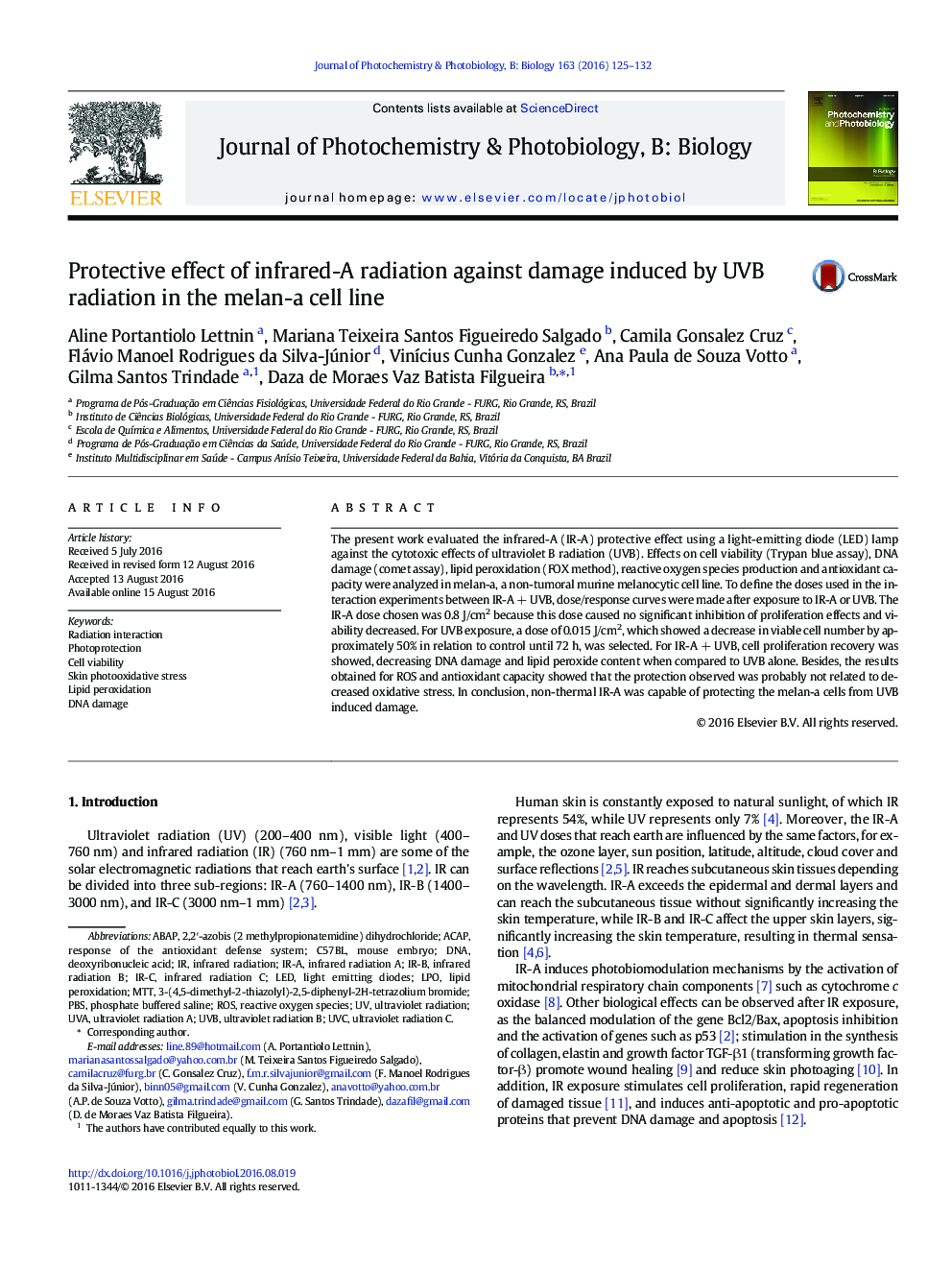| Article ID | Journal | Published Year | Pages | File Type |
|---|---|---|---|---|
| 4754655 | Journal of Photochemistry and Photobiology B: Biology | 2016 | 8 Pages |
â¢IR-A reduces the cytotoxic effects induced by UVB in melan-a cells.â¢IR-A reduced lipid peroxidation levels and reduced DNA damage caused by UVB.â¢IR-A was unable to prevent oxidative stress state induced by UVB.â¢IR-A protective effect is energy dependent, disregarding the heat influence.
The present work evaluated the infrared-A (IR-A) protective effect using a light-emitting diode (LED) lamp against the cytotoxic effects of ultraviolet B radiation (UVB). Effects on cell viability (Trypan blue assay), DNA damage (comet assay), lipid peroxidation (FOX method), reactive oxygen species production and antioxidant capacity were analyzed in melan-a, a non-tumoral murine melanocytic cell line. To define the doses used in the interaction experiments between IR-AÂ +Â UVB, dose/response curves were made after exposure to IR-A or UVB. The IR-A dose chosen was 0.8Â J/cm2 because this dose caused no significant inhibition of proliferation effects and viability decreased. For UVB exposure, a dose of 0.015Â J/cm2, which showed a decrease in viable cell number by approximately 50% in relation to control until 72Â h, was selected. For IR-AÂ +Â UVB, cell proliferation recovery was showed, decreasing DNA damage and lipid peroxide content when compared to UVB alone. Besides, the results obtained for ROS and antioxidant capacity showed that the protection observed was probably not related to decreased oxidative stress. In conclusion, non-thermal IR-A was capable of protecting the melan-a cells from UVB induced damage.
